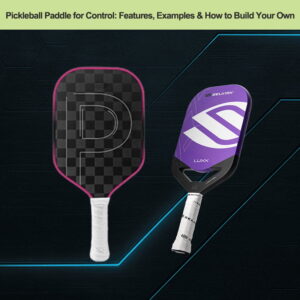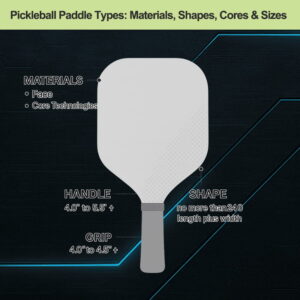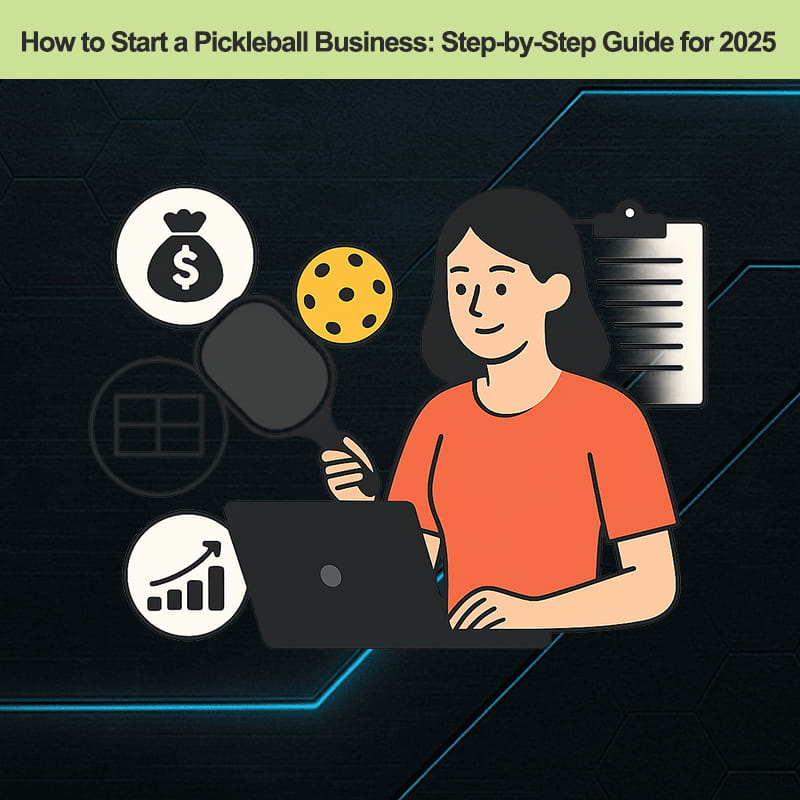
Pickleball ist nicht mehr nur ein Sport - es ist ein Phänomen. Von Nachbarschaftsplätzen bis hin zu professionellen Turnieren ist Pickleball zu einer der am schnellsten wachsenden Sportarten weltweit geworden. Und wo es Leidenschaft gibt, gibt es auch Geschäftsmöglichkeiten.
Egal, ob Sie Ihre eigene Paddelmarke auf den Markt bringen, eine Pickleball-Anlage eröffnen oder Ausrüstung online verkaufen möchten, der Markt ist weit offen - und wächst schnell.
Unter PKZK Pickleballeinem führenden pickleball paddle Hersteller in ChinaWir haben Marken auf der ganzen Welt dabei geholfen, ihre Produkte zum Leben zu erwecken. Wir wissen, was funktioniert und welche Fallstricke bei der Gründung eines Pickleball-Unternehmens zu vermeiden sind.
In diesem Leitfaden führen wir Sie durch wie man ein Pickleball-Unternehmen gründetSchritt für Schritt, während wir unsere Erfahrungen bei der Herstellung von Paddeln für Start-ups und etablierte Marken weitergeben.
Warum Pickleball eine schnell wachsende Geschäftsgelegenheit ist
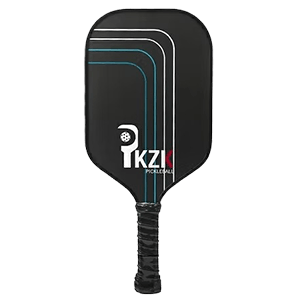
Bevor Sie Ihre Zeit und Ihr Geld investieren, sollten Sie verstehen, warum Pickleball ein so großes Geschäftspotenzial hat:
- Die am schnellsten wachsende Sportart in den USA seit drei Jahren in Folge (SFIA, 2024).
- 36,5 Millionen Menschen im vergangenen Jahr mindestens einmal Pickleball gespielt haben.
- Wachsende Nachfrage nach Paddeln, Bällen, Bekleidung und Zubehör sowohl auf dem Freizeit- als auch auf dem Wettkampfmarkt.
- Ausweitung des Gerichtsbaus in Nordamerika, Europa und Asien.
Der Reiz von Pickleball liegt in seiner niedrige Einstiegshürde, soziale Atmosphäre und süchtig machendes Gameplay. Das schafft Möglichkeiten für den Verkauf von Ausrüstung, Coaching-Dienste und den Besitz von Einrichtungen.
Schritt 1 - Entscheiden Sie sich für Ihr Pickleball-Geschäftsmodell
Ihr Geschäftsmodell bestimmt die Höhe Ihrer Investitionen, den täglichen Betrieb und die Gewinnspannen. Die Pickleball-Branche bietet mehrere Möglichkeiten:
1. Einzelhandel und E-Commerce
Verkaufen Sie Pickleball-Schläger, Bälle, Netze und Zubehör über Online-Plattformen wie Amazon, Shopify, Etsyoder Ihre eigene Website.
- Profis: Geringer anfänglicher Aufwand, großer Kundenkreis, skalierbar.
- Nachteile: Sehr wettbewerbsfähig, erfordert Fachwissen im Bereich digitales Marketing.
2. Herstellung & Eigenmarke
Arbeit mit einem Hersteller von Pickleball-Schlägern wie PKZK Pickleball, um Ihre eigene Paddelmarke zu schaffen. Sie können das Aussehen gestalten, Materialien auswählen und die Verpackung anpassen - ohne eine eigene Fabrik zu betreiben.
- Profis: Markenbesitz, Kontrolle über die Produktqualität, höhere Gewinnspannen.
- Nachteile: Höhere Anfangsinvestitionen, längere Produktentwicklungszeit.
3. Coaching & Ausbildung
Bieten Sie Privatunterricht, Gruppenkurse oder Teambuilding-Veranstaltungen für Unternehmen an. Kann mit dem Verkauf von Paddeln und Zubehör kombiniert werden.
- Profis: Geringe Anlaufkosten, persönlicher Kontakt mit den Kunden.
- Nachteile: Das Einkommen hängt von Ihrer Verfügbarkeit und Ihrem Ruf ab.
4. Eigentum an der Einrichtung
Bauen oder mieten Sie Innen- und Außenplätze für Pickleball. Berechnen Sie die Spielzeit, führen Sie Ligen durch und veranstalten Sie Turniere.
- Profis: Stabile wiederkehrende Einnahmen, Aufbau einer Gemeinschaft.
- Nachteile: Hohe Anfangsinvestitionen, laufende Wartungskosten.
Schritt 2 - Recherchieren Sie Ihren Markt und Ihr Zielpublikum
Auch in einer boomenden Branche gibt es Wettbewerb. Der Schlüssel ist Ihre Nische finden.
Beginnen Sie mit der Frage:
- An wen wollen Sie verkaufen? Anfänger, Wettkampfspieler oder Institutionen wie Schulen und Vereine?
- Wie groß ist die Nachfrage in Ihrer Region - für Freizeitspiele, Profigeräte oder Firmenveranstaltungen?
- Wer sind Ihre Konkurrenten, und was machen sie gut (oder schlecht)?
💡 Beispiel: Wenn es in Ihrem Gebiet viele Anfänger gibt, könnten Sie sich auf Folgendes konzentrieren erschwingliche, leichte Paddel und Einsteigerpakete. Wenn Sie sich an fortgeschrittene Spieler wenden, thermogeformte Pickleball-Schläger könnte Ihr Kernprodukt sein.
PKZK Pickleball hilft seinen Kunden oft, ihre Produktspezifikationen auf ihr ideales Kundensegment zuzuschneiden, damit sie vom ersten Tag an mit dem richtigen Angebot auf den Markt kommen.
Schritt 3 - Erstellen eines Geschäftsplans
Ein klarer Plan sorgt dafür, dass Sie sich konzentrieren können, und bereitet Sie auf Herausforderungen vor. Einschließen:
- Ziele - z.B. Verkauf von 1.000 Paddles im ersten Jahr, Erweiterung auf drei Modelle im zweiten Jahr.
- Haushalt - Kosten für Produktherstellung, Marketing, Versand und Betrieb.
- Vertriebskanäle - Direkt an den Verbraucher, Großhandel oder beides.
- Marketingplan - SEO, Werbung in sozialen Medien, E-Mail, Partnerschaften mit Influencern.
- Strategie der Preisgestaltung - Konkurrieren Sie über Qualität, Design oder Erschwinglichkeit.
Tipp: Vergessen Sie nicht, Folgendes zu berücksichtigen Versand- und Zollgebühren wenn Sie Waren importieren. PKZK Pickleball versendet weltweit und kann Ihnen bei der Berechnung der Landed Costs helfen.
Schritt 4 - Beschaffen Sie hochwertige Pickleball-Produkte
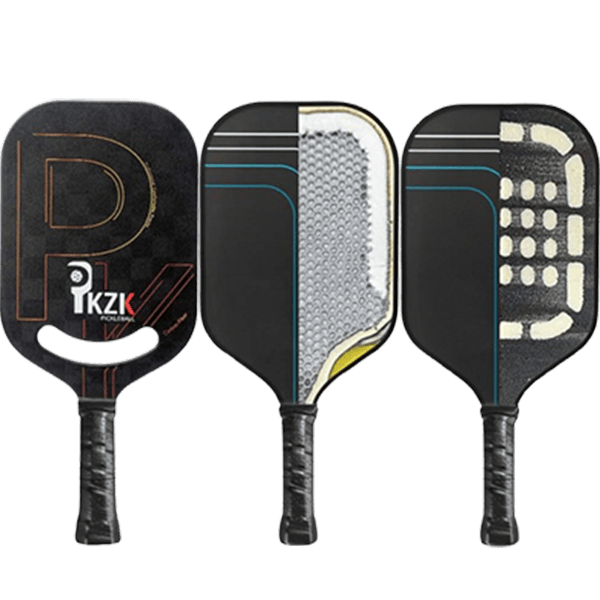
Ihre Produkte sind das Herzstück Ihres Unternehmens. Wenn die Qualität nicht stimmt, leidet der Ruf Ihrer Marke.
Unter PKZK Pickleballbieten wir zwei Hauptproduktionsmethoden an:
- Kaltgepresste Paddel - Keine Formkosten, kleine Mengen (ab Dutzenden), ideal für Start-ups, die den Markt testen.
- Thermogeformte Paddel - Hochwertige Kohlefaser, außergewöhnliche Haltbarkeit, ideal für Wettkampfspieler. Erfordert Investitionen in die Form, liefert aber professionelle Leistung.
Wir sind auch spezialisiert auf pickleball paddles bulk Bestellungen - mit Optionen für Logodruck, Griffumhüllungen, Kantenschutz und individuelle Verpackungen.
Durch die Partnerschaft mit einer pickleball paddle Hersteller in China gewährleisten Sie von Anfang an eine gleichbleibende Qualität und verlässliche Produktionsabläufe.
Schritt 5 - Aufbau Ihrer Marke und Online-Präsenz
Ihre Marke ist mehr als ein Logo - sie ist die Art und Weise, wie Kunden Sie wahrnehmen.
Marke Essentials:
- Logo und Markenfarben.
- Professionelle Produktfotografie.
- Konsistenter Tonfall in Ihrem Marketing.
Online-Essentials:
- Eine Website, die sowohl für den Desktop als auch für mobile Geräte optimiert ist.
- Hochwertige Produktseiten mit detaillierten Spezifikationen.
- Konten in den sozialen Medien, die Ihre Produkte in Aktion zeigen.
- SEO-orientierte Blog-Inhalte, die auf pickleballbezogene Keywords abzielen (wie dieser Artikel).
PKZK Pickleball kann bieten Produktbilder und Marketingmaterialien damit Sie schneller starten können.
Schritt 6 - Marketing und Ausbau des Kundenstamms
Sie können das beste Produkt der Welt haben, aber ohne Marketing wird niemand davon erfahren.
Digitale Marketing-Strategien:
- Soziale Medien - Teilen Sie kurze Videos von Spielen, Tipps und Produktvorstellungen.
- Influencer-Kollaborationen - Partnerschaften mit Pickleball-Trainern oder beliebten Spielern für Rezensionen und Werbegeschenke.
- E-Mail-Marketing - Erstellen Sie eine Liste für Werbeaktionen, Ankündigungen neuer Produkte und Tipps.
- SEO-Blogging - Veröffentlichen Sie Artikel wie "Wie man ein Pickleball-Paddel auswählt", um den organischen Verkehr zu steigern.
Offline-Marketing-Strategien:
- Sponsern Sie lokale Turniere und Veranstaltungen.
- Bereitstellung von Demo-Paddeln für Gemeindezentren.
- Partnerschaften mit Sportgeschäften und Vereinen für Großbestellungen.
Schritt 7 - Skalierung Ihres Pickleball-Geschäfts
Sobald Sie konstante Umsätze haben, ist es an der Zeit, zu expandieren:
- Ergänzende Produkte hinzufügen - Bälle, Netze, Bekleidung, Trainingshilfen.
- Neue Märkte erschließen - Der internationale Versand eröffnet neue Möglichkeiten.
- Individuelle Firmengeschenke anbieten - Gebrandete Paddel für Unternehmen und Veranstaltungen.
Viele PKZK-Kunden fangen klein an, entwickeln sich dann zu Vollservice-Marken mit mehreren Paddelmodellen und Zubehör und werden schließlich zu Mehrproduktmarken mit weltweitem Vertrieb.
Häufige Fehler, die man bei der Gründung eines Pickleball-Unternehmens vermeiden sollte
- Überspringen von Produkttests - Testen Sie immer Prototypen, bevor Sie in Serie gehen.
- Unterschätzung der Versandzeiten - Berücksichtigen Sie die Vorlaufzeiten für Produktion und Logistik.
- Kundenfeedback ignorieren - Passen Sie Ihre Produkte und Dienstleistungen auf der Grundlage von Bewertungen an.
- Frühzeitige Überbevorratung - Beginnen Sie mit einem überschaubaren Bestand und passen Sie ihn der wachsenden Nachfrage an.
Letzte Überlegungen: Partner mit PKZK Pickleball zu Jumpstart Ihr Geschäft
Die Gründung eines Pickleball-Geschäfts ist eine aufregende Gelegenheit - aber der Erfolg hängt von Qualitätsprodukten, kluger Planung und zuverlässigen Partnern ab.
Unter PKZK Pickleballbieten wir an:
- Niedrige MOQs für Start-ups.
- OEM-Anpassung für Paddel, Zubehör und Verpackungen.
- Globaler Versand mit Qualitätskontrolle bei jedem Schritt.
Ganz gleich, ob Sie Ihr erstes Produkt auf den Markt bringen oder sich zu einer internationalen Marke entwickeln wollen, wir helfen Ihnen, erfolgreich zu sein.
📩 Kontaktieren Sie uns heute für ein kostenloses Angebot und eine Beratung zu Ihrer Pickleball-Geschäftsidee.

